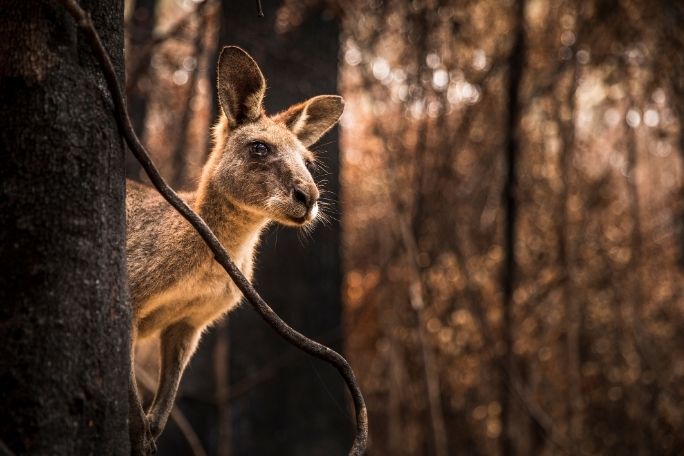Lesson summary
As humans, we form connections and rely on a range of people to have a healthy, happy life. Nature also relies on a variety of lifeforms to remain healthy and functional. A family tree is a way we can keep track of our family connections, and in ecosystems, trees are also a pretty good way to keep track of what life is around, because they are so important in providing food, habitat and shelter. In this activity, you will learn about biodiversity, and the ways that trees support a variety of life, so you can see the importance of maintaining or replanting forest areas.
Lesson guides and printables
Lesson details
Curriculum mapping
Curriculum codes:
- Year 5: ACSSU043, ACSHE083, ACELA1513, ACHASSK114, ACAVAM116
- Year 6: ACSSU094, ACSHE100, ACELA1526, ACAVAM116
Ideal for: Upper Primary Ages 10 – 12
Themes:
- Be creative
- Think and connect
Time required: 90 minutes
Curriculum connections: Science, English, Visual Arts, Sustainability, Critical and Creative Thinking
Resources required
- Art supplies of choice
- Internet access
- Student worksheet
Additional info
Following this lesson is an ideal way for students to participate in Planet Ark’s Schools Tree Day – the largest nature-care event in Australian schools. You and your students will join thousands of amazing teachers in making a difference, fostering a child’s love of nature and creating positive environmental change. So, get growing! It only takes a minute to register for Schools Tree Day.
Tips for Parents and Carers
The theme for National Tree Day in 2020 is Regeneration: For our land, for our people, for our future.
The Australian landscape is vulnerable to habitat destruction from regular fire events, and regeneration of these landscapes is essential to support biodiversity and healthy populations of plants and animals.
The stress brought about by recent events, which have impacted the way we live in Australia, can also impact the mental health of the population, including younger Australians. Rebuilding community and family connections, along with reconnecting with the beauty of natural landscapes, can help with mental recovery.
Finally, building hope by suggesting achievable actions to help our land and each other, and celebrating the things that are already being achieved, will build resilience within children and help envisage a desirable future.
Note: When your students or kids produce their artwork in Part D of this lesson, consider sending it to us here at Cool Australia (email info@coolaustralia.org)
Learning@Home from Cool Australia
Learning@Home resources are designed for parents and teachers to use with children in the home environment. They can be used as stand-alone activities or built into existing curriculum-aligned learning programs. Our Learning@Home series includes two types of resources. The first are fun and challenging real-world activities for all ages, the second are self-directed lessons for upper primary and secondary students. These lessons support independent learning in remote or school settings.


Welcome back!
Don't have an account yet?
Log in with:
By signing up to Cool.org you consent and agree to Cool's privacy policy to
store, manage and process your personal information. To read more, please see
our privacy policy here(Opens in new tab).
Create your free Cool.org account.
Many of our resources are free, with an option to upgrade to Cool+ for premium content.
Already have an account?
Sign up with:
By signing up to Cool.org you consent and agree to Cool's privacy policy to
store, manage and process your personal information. To read more, please see
our privacy policy here(Opens in new tab).